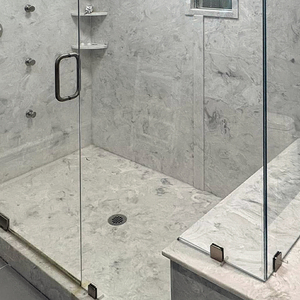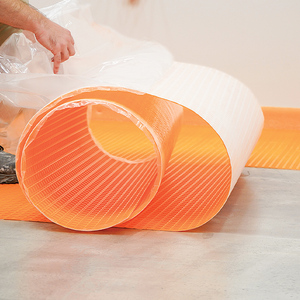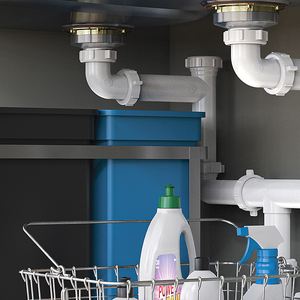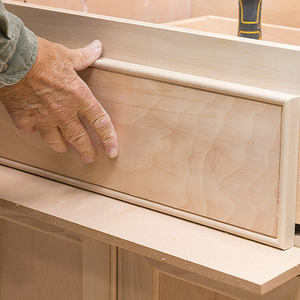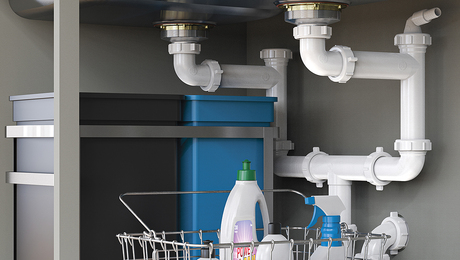Three bathroom refinements
Clever ways to hide plumbing, trash containers and toilet paper
Hidden trash can
My vanity cabinet intersects the end wall at 45°. I wanted to use the resulting space effectively and decided to hide a small trash can there. The available space was just the right fit for an empty 1-gal. drywall-mud container. With the bottom cut out, it acts as a support ring for a trash bag secured with a rubber band. I mounted a shelf inside the cabinet door and cut a hole in it for the container.
The cabinet door swings out from the bottom, which prevents the shelf from interfering with the door frame. The vanity doors all look the same from the outside, so a tug on this particular door’s handle results in a slight surprise. A catch at the end of a thin oak strip lets the door fall open just enough to expose the trash can. Pressing this springy strip releases the catch, allowing the door to open wider for access to the cleaning supplies stored in the cabinet. A small brass plaque on the door identifies the trash location for guests.
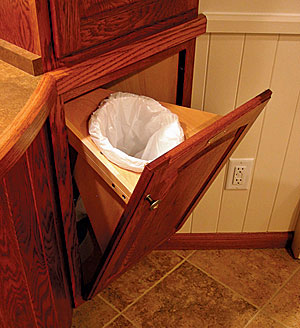
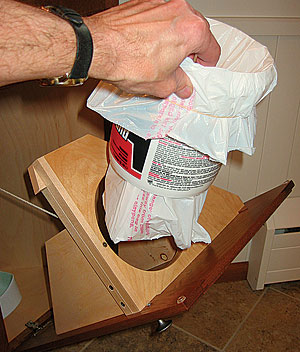
Wainscot plumbing access door
If repairs are needed, access to the tub and shower valve hidden in the wall cavity is provided via a removable door camouflaged in the wainscot. I sized the door so that its vertical edges coincide with V-grooves in the tongue-and-groove wainscot. When I glued up the door, I applied a couple of reinforcing ribs behind it. The tongue edge of the door slips into the groove of the adjacent fixed wall panel. I machined off the inside half of the groove on the other edge so that it can lap over the mating wall-panel tongue.
The top and bottom of the door are concealed by the baseboard and by a rabbet underneath the chair rail. When the baseboard’s trim-head screws are removed, the access door can be slipped down below the rabbet and swung out to expose the plumbing.

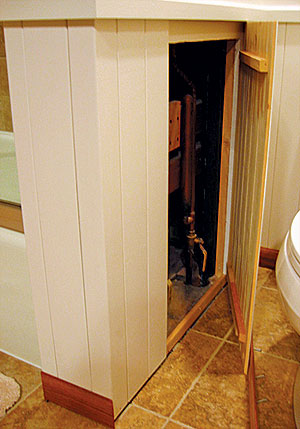
Recessed toilet-paper dispenser
My toilet-paper dispenser is handy for many reasons, not least of which is storage of extra rolls. Recessed into the wall cavity, the integrated chamber holds three rolls; when the bottom one is removed, another falls into place.
In the dispenser, a wooden spindle slips into grooves cut in the frame. Magnets epoxied into countersunk holes in the dispenser frame attract flathead wood screws in the spindle ends. A tug on the spindle releases it to remove and replace an empty roll. With the spindle removed, the hinged dispenser lid can be lifted to load additional rolls.
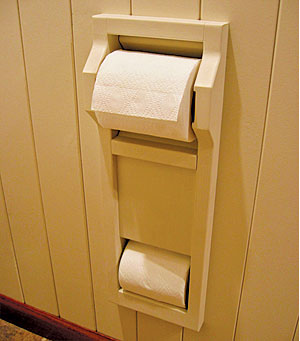
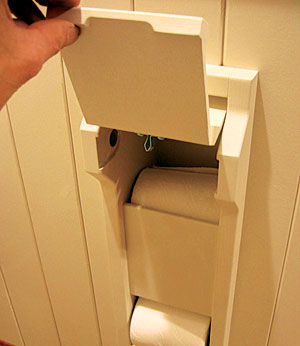
Photos by: Dwayne Intveld


